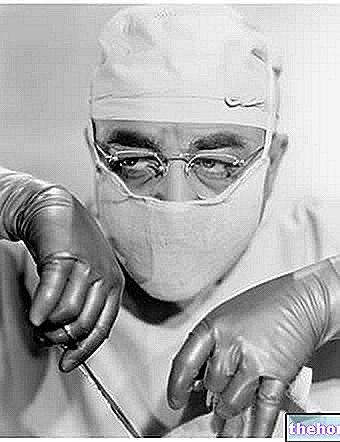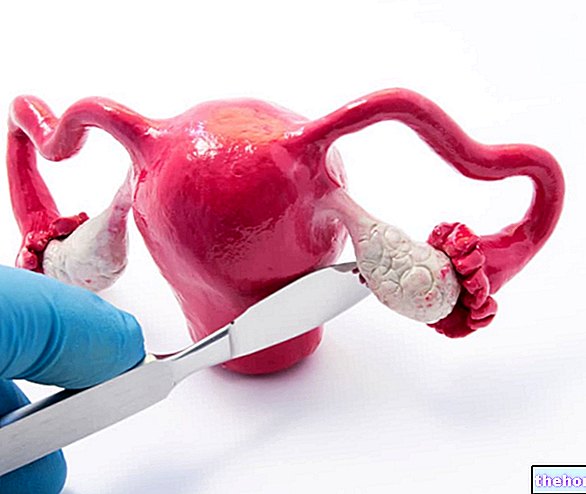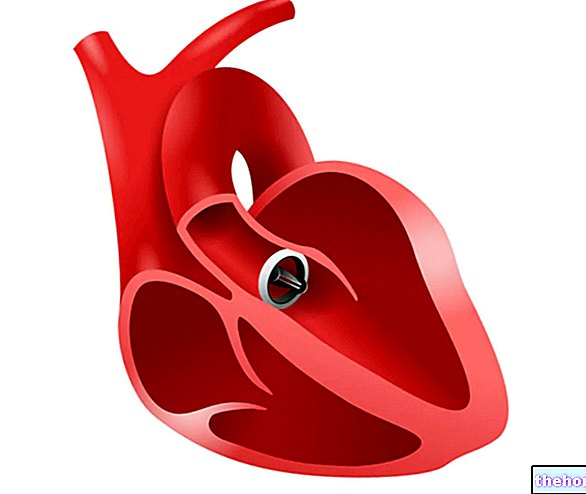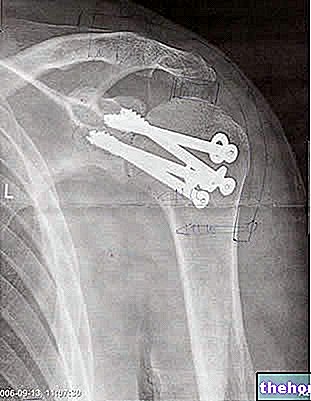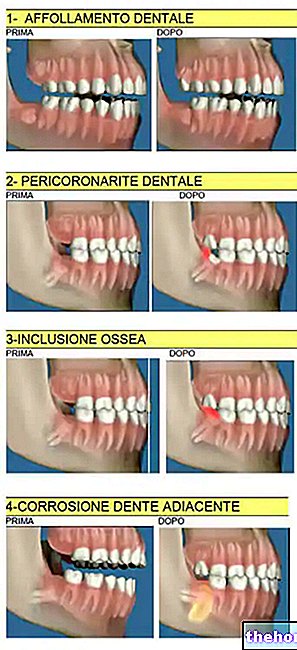The implanted healthy kidney may come from a dead or living compatible donor; the possibility of being able to exploit living donors depends on the fact that the human being can lead a normal life even with only a healthy kidney.
How common is kidney transplantation in Italy?
Before analyzing the numbers of kidney transplantation in Italy, it should be remembered that, due to the difficulty of finding appropriate donors for those who need a healthy kidney, the requests for transplantation exceed, and by a lot, those that are available.
According to the Italian Government website, in 2018, the number of kidney transplants performed reached 2,117 (of which 287 from living donors).
Furthermore, the same source also adds, again with reference to 2018, there has been a decrease in requests for kidney transplants: compared to the previous year, in fact, the number of people on the waiting list dropped from 6,683 to 6,545 .
Anatomy and Functions of the Kidneys: A Brief Review
In number of two, the kidneys are the organs that, together with the urinary tract, constitute the so-called urinary system or excretory system, whose task is to produce and eliminate urine.
Representing the main structures of the aforementioned apparatus, the kidneys reside in the abdominal cavity (to be precise, on the sides of the last thoracic vertebrae and the first lumbar vertebrae), are symmetrical and have a shape very similar to that of a bean.
Kidney function
The kidneys perform various functions; among these, the most important are:
- Filter waste substances, harmful substances and foreign substances present in the blood and convert them into urine;
- Regulate the hydro-saline balance of the blood;
- Regulate the acid-base balance of the blood;
- Produce the glycoprotein erythropoietin.
More specifically, kidney transplantation is one of the therapeutic options for chronic renal failure when the latter is at the most advanced stage.
In the people who receive it and in the hypothesis in which the operation is successful, the kidney transplant replaces a difficult therapy such as dialysis (or hemodialysis), a treatment that artificially reproduces the functions of the kidney and to which the patient must undergo periodically for the rest of his life (in the absence of the transplant).
For further information: Chronic Renal Failure: Causes and Symptoms or have a recent history of cancer; those who are suffering from a serious infection (eg: AIDS, tuberculosis, osteomyelitis, hepatitis); color who have severe heart disease or liver disease.The presence of these three requirements means that there are concrete chances of transplant success.
As will be seen better below, to know if an individual is an ideal candidate for kidney transplantation, an individual must undergo a series of medical-specialist examinations and checks aimed at evaluating the three requirements listed above.
and urine, and cancer screening tests. They provide important information on the patient's state of health; being healthy is essential to be able to receive a new kidney.If from the aforementioned investigations it emerges that the patient does not present significant pathologies and addictions, and that he is aware of the implications of kidney transplantation, the National Transplant Center will arrange for him to be placed on the waiting list.
Kidney Transplant: reasons for exclusion from the Waiting List
- Serious infectious diseases (if it were to be a transient disease, it is possible to wait for the recovery from this and, then, propose again for inclusion in the list);
- HIV infection (AIDS);
- Severe cardiovascular disorders;
- Cancer in any part of the body
- Being unable to take care of your health;
- Mental instability;
- Addiction to drugs, alcohol and / or smoking.
Kidney Transplant: Waiting Times
According to the website of the Ministry of Health, in Italy, the average waiting time for kidney transplantation from a deceased donor is 3.4 years.
As can be seen, the times are quite long, despite the patient's need is immediate; this problem is due, as already stated, to the deep gap between availability and demand for organs.
It is important to note that the wait for a kidney transplant can be much shorter, when the donor is still a living relative of the patient (transplant from a living person).
Kidney transplant: What to do while waiting for surgery?

The call from the National Transplant Center, which informs about the availability of a healthy kidney, takes place without warning; therefore, once placed on the waiting list, the patient must, in a certain sense, always keep himself ready, preparing in advance a suitcase with everything he might need during the post-operative hospital stay.
Received the call, it is recommended to keep fasting and avoid drinking, as the transplant operation requires general anesthesia.
In addition, it is important to point out a number of other fundamental behavioral rules, including:
- Inform the National Transplant Center of any changes in the general state of health, with respect to the checks carried out for access to the waiting list (eg: communicate if an infection is in progress);
- Adopt and maintain a healthy lifestyle, then eat in a balanced way, avoid a sedentary lifestyle, do not smoke, do not overindulge in alcohol and do not use drugs.
Did you know that ...
Those waiting for a kidney transplant must continue to undergo periodic hemodialysis.
and lymphocyte antigens (HLA), and that a particular specific test, called cross-match, is negative.Kidney transplant: tests for the search for Compatible Donors
Among the various tests prescribed by the National Transplant Center, there is also the analysis of the blood group and the so-called human lymphocyte antigen (or HLA typing).
The search for a compatible donor by the National Transplant Center will be based on the results of this analysis.
Blood group
The analysis of the blood group obviously takes place on the basis of the AB0 system and on the basis of the Rh factor.
HLA typing
When we talk about HLA typing we refer to a series of antigens located on the surface of white blood cells.
The greater the similarity between donor and recipient for these antigens, the stronger the match for HLA typing.
Cross-match
The cross-match is a test carried out once a potential donor, whether living or deceased, has been identified.
Put simply, this test involves mixing a blood sample from the donor with a blood sample from the potential recipient and observing the resulting reaction: if the potential recipient's blood does not produce any antibody reaction to the antigens present in the blood of the recipient. donor, the test is negative and a hypothetical transplant could be successful; if, on the other hand, the blood of the potential recipient produces an antibody reaction upon contact with the donor's blood, the test is positive and a hypothetical transplant presents a significant risk of rejection.
during the intervention.The implementation of general anesthesia involves the patient falling asleep, who remains unconscious for the entire duration of the procedure.
Kidney Transplant Operation
Carried out by a "specialized surgical team," the kidney transplant work includes:
- Making an incision in the lower abdomen.
- The housing of the new kidney together with its ureter in the abdominal cavity and the connection of the arterial and venous vessels of the transplanted organ to the patient's vascular system (precisely, to the vessels of the lower abdomen); this second step allows the vascularization of the new kidney.
- The connection of the ureter of the new kidney to the bladder. Sometimes, temporary insertion of a small stent inside the ureter, to avoid narrowing (the removal of the stent is typically dated 6-12 weeks after transplantation).
Unless the old kidneys are a cause for stones, pain, high blood pressure, or infection, the operating surgeon leaves them in place, so he doesn't remove them.
Once the new ureter has been connected to the bladder, the operation is finished; the closure of the incision with sutures is the end of the operation.
Remember that, during the entire procedure, the medical team monitors the patient's vital parameters (heart rate, blood pressure, oxygen saturation, etc.).
Living Donor Kidney Transplant

From an operational point of view, kidney transplantation from living donors is an "operation almost comparable to kidney transplantation from deceased donor; the only difference is that to the surgical operation described above, another" operation "is added for the removal of the new kidney from the donor.
Generally, living donor kidney transplantation involves two members of the same family, not only because of the link between them, but also because a certain compatibility is more likely.
Kidney transplant: how long does the surgery last?
Kidney transplant surgery takes approximately 3-4 hours.
).From now on, he must follow a program of periodic checks, which serve to assess the impact of the kidney transplant on his body.
At the beginning, the checks are very frequent (even 2-3 per week); over time, however, less and less are needed (in the absence of complications, after a year, a check-up is scheduled every 3-6 months).
Kidney Transplant: Immunosuppressants and other Drugs
Since the use of immunosuppressants increases the risk of infection, kidney transplant patients often have to undergo additional drug therapies, which prevent infectious diseases from bacteria, fungi and viruses.
Kidney Transplant: Recovery Times
In the absence of complications, recovery times after a kidney transplant are in the order of several months.
To return to work and normal daily activities, it is generally necessary to wait 8 weeks.
, which require hospital care.
Formation of abnormal blood clots
The implantation of a new kidney includes a work of reconstruction of the blood vessels destined to supply the organ.
In the blood vessels rebuilt for the occasion it is easier for dangerous blood clots to form, capable of obstructing the passage of blood and interrupting the correct vascularization.
The formation of abnormal blood clots is a problem that affects approximately 1 in 100 patients.
In the most fortunate cases, but also rarer, this complication can be solved with an anticoagulant drug; more often, however, it requires the removal of the new kidney.
Arterial stenosis
The new arterial vessels that supply the transplanted kidney could undergo a narrowing of the caliber (stenosis), which compromises the vascularization of the organ.
The remedy for this complication is to insert one stent.
Blockage of the ureter
Various reasons can block the ureter connected to the new kidney; one of them, for example, is an abnormal blood clot.
To remedy the blockage of the ureter, doctors can use a catheter or surgically intervene on the structure of the obstructed urinary tract.
Leaking urine from the ureter
After kidney transplantation, it may happen that the ureter connected to the transplanted organ loses small amounts of urine, which can accumulate in the abdominal cavity or come out of the surgical incision.
To remedy this complication, ureter repair surgery is needed.
Did you know that ...
Arterial stenosis, blockage of the ureter and leakage of urine from the ureter are complications that can occur even several months after the operation.
Rejection of the transplanted organ (or acute rejection disease)
Organ transplant rejection is perhaps the best known and most common complication of all types of transplantation, including kidney transplantation.
This complication occurs because the transplant recipient's immune system identifies the new kidney as something foreign, not belonging to the organism.
In such circumstances, the immune system's reaction is to react against the new organ and "attack" it with mechanisms similar to those observed in the presence of autoimmune diseases.
In 1 in 3 patients, acute kidney rejection disease can be curbed, often successfully, with an enhancement of immunosuppressant therapy.
Kidney Transplant: Long-Term Complications
Immunosuppressants are essential drugs to avoid rejection of the new kidney.
However, these medicines are associated with a number of short and long-term side effects, including:
- Increased risk of infection;
- Increased risk of diabetes;
- Hypertension and hypercholesterolemia;
- Weight gain
- Abdominal pain;
- Diarrhea;
- Hair loss
- Osteoporosis;
- Acne;
- Gingival hypertrophy;
- Tendency to bleeding and bruising;
- Tumors of various kinds.
Tumors
Prolonged intake of immunosuppressants favors the onset of some types of cancer; in particular, it is associated with an increased risk of:
- Skin cancers, such as melanoma and skin cancers other than melanoma (eg: squamous carcinoma, basal cell carcinoma, etc.);
- Kaposi's sarcoma;
- Non-Hodgkin's lymphoma.

